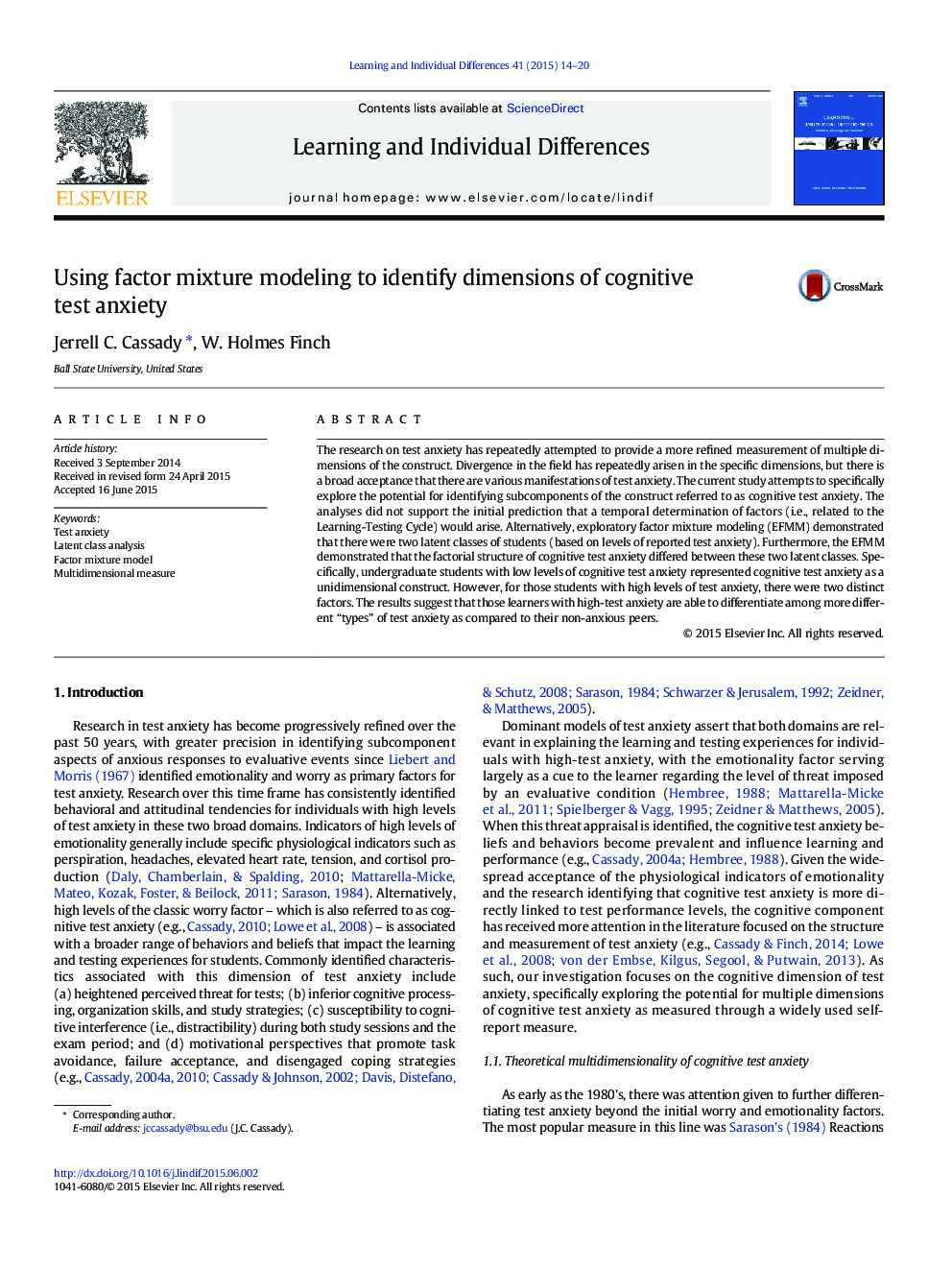| کد مقاله | کد نشریه | سال انتشار | مقاله انگلیسی | نسخه تمام متن |
|---|---|---|---|---|
| 364677 | 621082 | 2015 | 7 صفحه PDF | دانلود رایگان |
• High- and low-test anxious learners represent cognitive test anxiety differently.
• Students with low-test anxiety have a unidimensional interpretation for cognitive test anxiety.
• Students with high-test anxiety have a multidimensional representation for cognitive test anxiety.
• Factor mixture modeling identifies cognitive test anxiety factors differ for students with high and low test anxiety.
• High-test anxiety students differentiated between anxiety blockage and testing skills as cognitive test anxiety factors.
The research on test anxiety has repeatedly attempted to provide a more refined measurement of multiple dimensions of the construct. Divergence in the field has repeatedly arisen in the specific dimensions, but there is a broad acceptance that there are various manifestations of test anxiety. The current study attempts to specifically explore the potential for identifying subcomponents of the construct referred to as cognitive test anxiety. The analyses did not support the initial prediction that a temporal determination of factors (i.e., related to the Learning-Testing Cycle) would arise. Alternatively, exploratory factor mixture modeling (EFMM) demonstrated that there were two latent classes of students (based on levels of reported test anxiety). Furthermore, the EFMM demonstrated that the factorial structure of cognitive test anxiety differed between these two latent classes. Specifically, undergraduate students with low levels of cognitive test anxiety represented cognitive test anxiety as a unidimensional construct. However, for those students with high levels of test anxiety, there were two distinct factors. The results suggest that those learners with high-test anxiety are able to differentiate among more different “types” of test anxiety as compared to their non-anxious peers.
Journal: Learning and Individual Differences - Volume 41, July 2015, Pages 14–20
